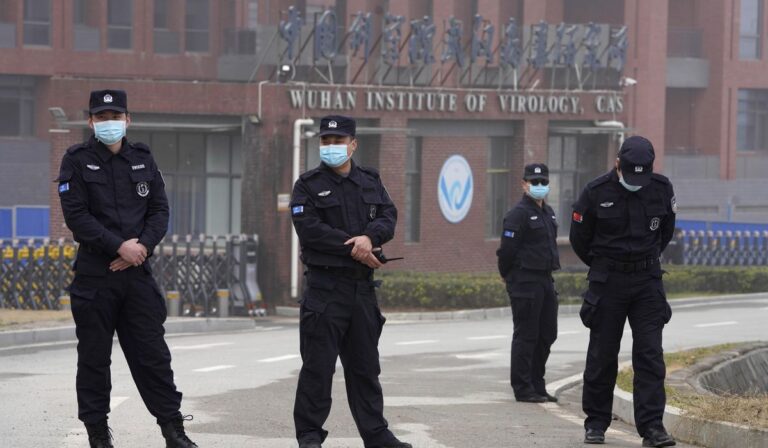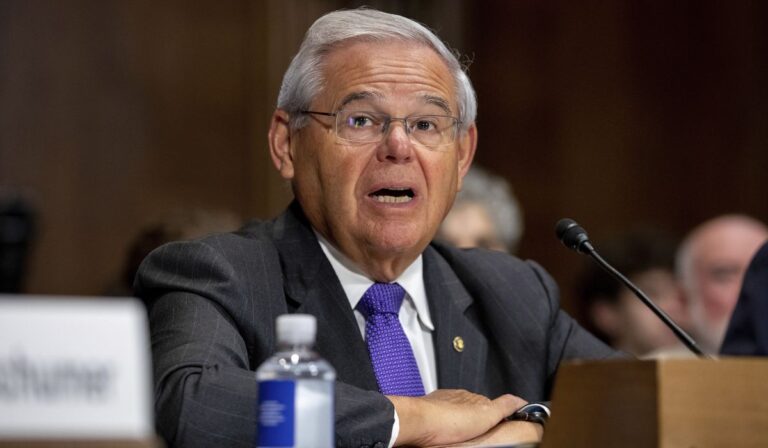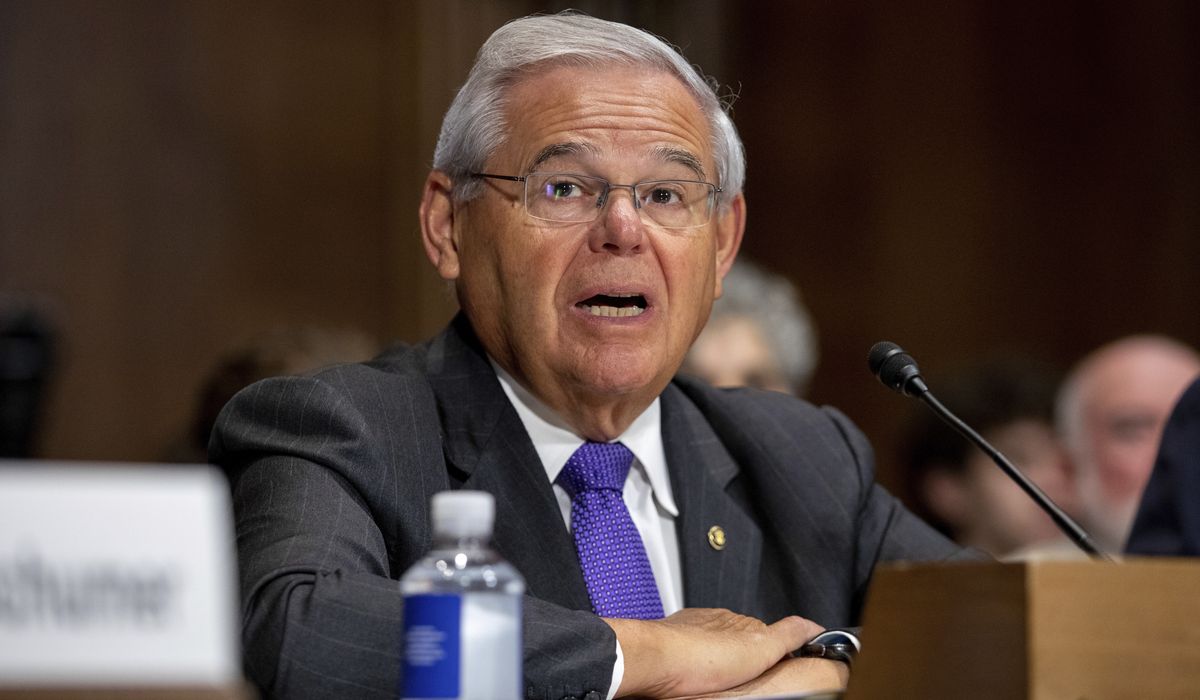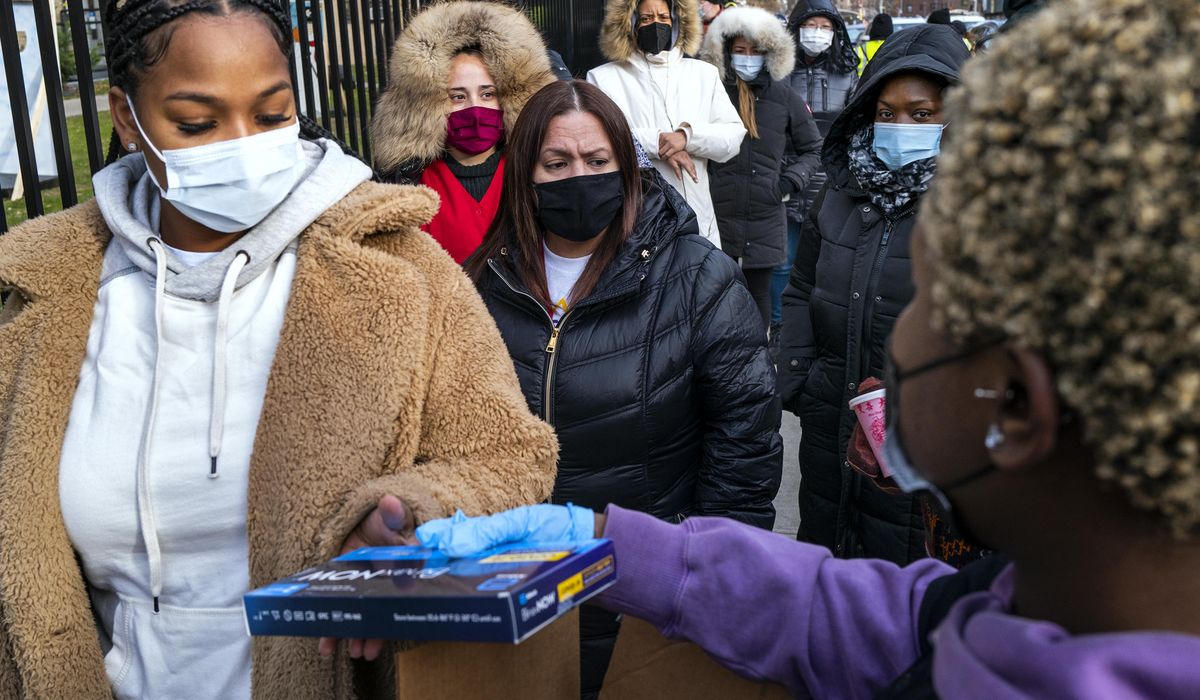
NEWS AND ANALYSIS:
A Marine Corps officer working with the Defense Advanced Research Projects Agency disclosed in a memorandum last August that his study of the virus behind the COVID-19 pandemic concluded that it was produced as part of vaccine research at the Wuhan Institute of Virology, according to documents made public by a conservative investigative group.
Maj. Joseph P. Murphy notified the Pentagon inspector general that his analysis of the virus origin concluded the nongovernment organization EcoHealth Alliance, the National Institutes of Health, and the Wuhan Institute of Virology produced the virus known as SARS-CoV-2 through controversial gain-of-function research outlined in a Pentagon grant proposal.
“SARS-CoV-2 is an American-created recombinant bat vaccine, or its precursor virus,” Maj. Murphy stated in an August 13, 2021, memo made public this week by Project Veritas. “It was created by an EcoHealth Alliance program at the Wuhan Institute of Virology (WIV), as suggested by the reporting surrounding the lab leak hypothesis.”
Asked about the 24 pages of internal documents made public by Project Veritas, DARPA spokesman Jared Adams told Inside the Ring in an email that federal regulations prohibit the agency from commenting on DARPA programs or documents.
“We are precluded by Federal Acquisition Regulations from discussing who may or may not have bid on a DARPA program, and are unable to confirm the authenticity of the documents Project Veritas has published,” Mr. Adams wrote.
Maj. Murphy and the Office of Naval Research did not immediately respond to an email request for comment.
According to Project Veritas, Maj. Murphy declined to discuss the document but told the group: “To those that seek answers I offer encouragement. There are good people striving for truth, working together in and out of government, and they succeed. … Don’t let a lie be our legacy to posterity.”
According to Maj. Murphy, now with the Office of Naval Research, details of the program were hidden since the pandemic began in Wuhan, China in December 2019. New facts were uncovered by Maj. Murphy from a grant proposal made to DARPA by the New York-based EcoHealth Alliance in March 2018 and “not publicly disclosed,” he stated.
The proposal was made in response to DARPA’s Project Defuse, aimed at addressing what the agency called the threat posed by bat-borne coronaviruses. SARS-CoV-2 is a bat coronavirus.
The proposal lists several U.S. researchers who would take part in the work and included the Wuhan Institute of Virology, located in the city considered the epicenter of the possible pandemic.
China’s government has denied the virus leaked from any of its laboratories, but has refused to provide information about the virus’s origin. Beijing also has accused the U.S. military of launching the pandemic.
The $14 million grant proposal to DARPA was produced by Peter Daszak, president of EcoHealth Alliance who worked closely on dangerous virus research at the Wuhan Institute of Virology. Mr. Daszak did not immediately respond to an email request for comment.
DARPA rejected the grant as potentially dangerous virus work, despite Mr. Daszak claiming in the proposal that the work would not violate U.S. restrictions on gain-of-function research.
However, the National Institute of Allergy and Infectious Diseases, headed by Anthony Fauci, approved a grant for the EcoHealth Alliance, and work on bat coronaviruses continued until halted by the federal government in April 2020.
Dr. Fauci has repeatedly denied during congressional testimony that the U.S. government funded any gain-of-function virus research in China.
In the 2018 proposal, Mr. Daszak stated that “we will intensively sample bats at our field sites where we have identified high spillover risk SARSr-CoVs” – the term for bat coronaviruses.
“We will sequence their spike protein, reverse engineer them to conduct binding assays and insert them into bat SARS-CoVs (WIV1, SHC014) backbones (these use bat-SARSr-CoV backbones, not SARS-CoV, and are exempt from dual-use and gain of function concerns) to infect humanized mice and assess capacity to cause SARS-like disease,” Mr. Daszak stated.
The work was aimed at developing a vaccine to be sprayed on bats that the researchers believed would prevent another disease outbreak like the first SARS outbreak in China in 2003.
Mr. Daszak said the work would include Shi Zhengli, the Chinese virologist at the Wuhan Institute of Virology who was to lead research on infecting humanized mice with the lab-created bat vaccine. Ms. Shi has also denied the lab has any role in the origins of COVID-19 or its spread among the local population.
U.S. intelligence agencies concluded in a public assessment last year that the virus was caused by either a leak from a Chinese laboratory or from emergence from an infected animal. The Murphy memorandum reflects the views of a good portion of U.S. intelligence analysts who believe the virus came from the Wuhan institute.
Maj. Murphy stated that his analysis is that the COVID virus likely emerged as a precursor, “deliberately virulent, humanized recombinant” virus that was reverse-engineered into a live bat vaccine.
Regarding efforts to conceal the work, Maj. Murphy said Pentagon officials placed the unclassified EcoHealth Alliance proposal in a top-secret file within DARPA’s Biological Technologies Office.
Maj. Murphy stated that the COVID virus is a synthetic “chimera” or lab-produced virus engineered to infect human cells. The virus is likely a live vaccine that escaped from the Chinese laboratory before it could be engineered into a less dangerous state, he added.
“It leaked and spread rapidly because it was aerosolized so it could efficiently infect bats in caves,” Maj. Murphy said, adding that initial escape took place in August 2019. The virus should be called “SARS-CoV-Wuhan,” Maj. Murphy stated.
The document also discloses the identity of a U.S. government team of experts who first concluded the virus came from a leak at the Wuhan lab. The group is called the Decentralized Radical Search Team Investigating COVID-19, or DRASTIC.
“This collection of scientists and sleuths broke open the lab-leak hypothesis into the mainstream and has picked apart Chinese and World Health Organization (WHO) reports on SARS-CoV-2’s origins in Wuhan,” he said.
Warning issued on Russian cyberthreat
Amid heightened tensions over a possible second Russian invasion of Ukraine, federal security agencies warned this week that Moscow could conduct cyberattacks against critical U.S. infrastructure.
The National Security Agency, FBI and Cybersecurity and Infrastructure Security Agency (CISA) said in an advisory issued Tuesday that state-sponsored Russian cyberattacks pose a threat. The three agencies stated that Russian intelligence agencies, the civilian SVR and military GRU, have formidable cyberattack capabilities and have demonstrated their prowess in the past.
Past victims include defense industrial networks, health care providers, energy and telecommunications companies and government networks.
Russian hackers hit “dozens” of state and local governments and aviation networks from September 2020 to December 2020, compromising networks and stealing data from multiple victims. Russian-based hackers also launched a major energy sector intrusion campaign from 2011 to 2018.
“These Russian state-sponsored … actors conducted a multi-stage intrusion campaign in which they gained remote access to U.S. and international energy sector networks, deployed [industrial control system]-focused malware, and collected and exfiltrated enterprise and ICS-related data,” the report said.
The government agencies urged network operators, especially those charged with defending critical infrastructure, to increase security and conduct “proactive threat hunting” in a search for Russian hacker intrusions.
Sophisticated Russian hackers use common but effective tactics to break into networks used by the 16 infrastructure systems considered critical, including computer systems linking energy, communications, transportation, finance, manufacturing, water, health care and food sectors.
Among the types of cyberattacks Russian could launch if the more than 100,000 Russian troops invade Ukraine are “spearphishing” emails, brute force log-in attempts and remote network control through known operating-system vulnerabilities in the accounts of network administrators.
Initial access for the attacks may be attempted through several virtual private networks, Cisco routers, Oracle servers, Citrix software, Microsoft Exchange and several other known avenues of attack.
“Russian state-sponsored [advanced persistent threat] actors have also demonstrated sophisticated tradecraft and cyber capabilities by compromising third-party infrastructure, compromising third-party software, or developing and deploying custom malware,” the warning states.
Industrial control systems used to operate the electric grid, dams and nuclear power plants also could be attacked by the Russians.
Past industrial control attacks linked to Moscow have included the Havex Trojan, which hit systems in the United States, Spain, France, Italy, and Germany beginning in 2014; and the 2015 cyberattacks against Ukrainian power companies that caused blackouts throughout the country.
Virus outbreaks in China threaten Olympics
China‘s anti-pandemic policy dubbed “zero Covid” is collapsing under the weight of mushrooming outbreaks of the omicron variant. Analysts say new outbreaks in several locations could derail the controversial upcoming Winter Olympics set for Beijing next month.
The regime announced in 2020 it experienced a questionable 4,600 deaths from the disease as part of its so-called zero COVID-19 policy.
However, Chinese propaganda outlets were forced to back off less credible assertions that China was free of COVID-19 cases and instead began asserting the government had reached “effective zero COVID.”
With two major cities, Xian and Tianjin, recently on lockdown over new disease outbreaks, the Chinese media are now describing the official government policy as “zero COVID on a societal level.”
That verbal jiujitsu has caused some analysts to scratch their heads in wonder over what that means, because people contract COVID-19, not societies.
The latest lockdown in Tianjin will test whether the virus spreads to Beijing, located about 30 minutes by train from Tianjin, and the host city for the Winter Games. Reports from a person in contact with numerous people inside China indicate the virus is spreading rapidly throughout the country.
Among the locations for new lockdowns by authorities are Shaoxing, a city close to the megacity of Shanghai; in the north at Anyang, and the city of Shenzhen, a large city near Hong Kong.
Chinese authorities already have initiated draconian protocols for Olympic athletes, including 14-day quarantine upon entry into the country and a highly restrictive “bubble” imposed over athletes’ movements and housing during the Games.
The latest outbreaks are likely to prompt new calls by human rights activities already advocating a strict boycott of the Games in response to charges of Chinese genocide against Uyghurs in western China.
—
For more information, visit The Washington Times COVID-19 resource page.


















